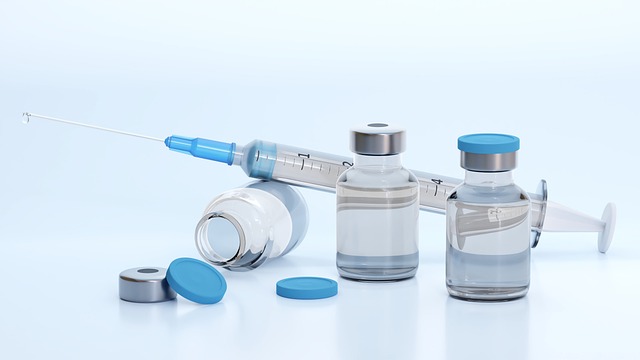
Discover how to cure Peyronie’s disease without surgery effectively and permanently! Peyronie’s disease offers a range of treatment options, spanning both surgical and non-surgical approaches.

While surgery is considered the most effective solution, it is also the most invasive. Non-surgical alternatives consist of oral medications, injections, and topical gels, all designed to address the symptoms associated with the condition.
Surgical interventions, conducted under anesthesia, were intended to correct penile curvature by reducing the length of the unaffected side. In some cases, circumcision was also performed simultaneously to enhance the outcome.
Latest Treatments For Peyronie’s Disease
In the past, treatment for Peyronie’s Disease or Peyronie’s Hourglass Shape mainly involved penile traction therapy or surgical intervention.
However, recent advancements and scientific findings have widened the range of new treatments for Peyronie’s disease.
From traction therapy utilizing penile traction devices to shockwave therapy, the treatment of Peyronie’s disease has significantly changed.
Furthermore, a combination of unique therapies has been developed to address both Peyronie’s disease and the often associated erectile dysfunction.
Here Are some Of The Latest Treatment Options For Peyronie’s:
- Medications: Oral medications, such as collagenase clostridium histolyticum (Xiaflex), are approved by the FDA for treating Peyronie’s disease. Xiaflex is injected into the scar tissue of the penis to help break it down and reduce curvature.
- Extracorporeal Shockwave Therapy (ESWT): ESWT involves the use of low-intensity shockwaves directed at the penile tissue. This treatment has shown promise in improving penile curvature and reducing pain associated with Peyronie’s disease.
- Penile Traction Therapy: This therapy involves using a device that applies gentle and consistent traction to the penis. It aims to stretch the scar tissue and gradually correct the curvature.
- Vacuum Erection Devices (VED): VEDs are external devices that build a vacuum around the penis, drawing blood into the organ and causing an erection.
- Surgical Interventions: In severe cases where conservative treatments haven’t provided satisfactory results, surgical options may be considered. These include penile plication (sutures placed to reduce curvature), plaque incision or excision, and penile prosthesis implantation.
- Platelet-Rich Plasma (PRP) Injections: PRP therapy involves injecting concentrated platelets from the patient’s own blood into the penile tissue. This treatment aims to promote tissue regeneration and improve penile curvature.
- Laser Therapy: Low-level laser therapy (LLLT) is a non-invasive treatment option that uses light energy to stimulate cellular activity and promote healing. It has shown promising results in reducing pain and improving penile function in Peyronie’s disease.
- Xiaflex with Vacuum Erection Device (VED) Therapy: Combining Xiaflex injections with the use of a vacuum erection device (VED) may enhance treatment outcomes. Xiaflex helps break down the scar tissue, while VED therapy assists in straightening the penis and improving blood flow.
- Orgotein therapy: In a recent study involving 23 patients with Peyronie’s disease who underwent Orgotein therapy, encouraging outcomes were observed. Participants reported diminished pain during erections, and with time, there was a discernible reduction in both the size of the hardened areas and the extent of penile deviation during erection. Equally significant, Orgotein exhibited exceptional safety and tolerability, providing a promising prospect for individuals dealing with this condition.
In some cases, collagenase treatment can eliminate the need for surgery or make surgical approaches less invasive, such as considering penile plication rather than incision and grafting.
Four Surgery Alternatives That Work For Peyronie’s Disease
We have previously mentioned surgical alternatives and now we will discuss four of them in more detail. You can use them separately or combine them all to treat Peyronie’s at home.
Xiaflex For Peyronie’s Disease
Xiaflex with Vacuum Erection Device (VED) Therapy: This combined strategy integrates Xiaflex injections and the application of a vacuum erection device (VED) to potentially optimize treatment outcomes.
Xiaflex serves to break down scar tissue, while VED therapy assists in rectifying penile curvature and improving blood circulation.
A comprehensive analysis of two randomized, placebo-controlled trials conducted in 2013 revealed an average curvature improvement of 17 degrees with collagenase treatment, in contrast to the 9-degree improvement observed in the control group.
In certain instances, collagenase treatment could obviate the necessity for surgery or render surgical interventions less invasive, potentially favoring penile plication over incision and grafting procedures.
Traction & Vacuum Devices For Peyronie’s Disease
Mechanical Stretching: These devices exert gentle mechanical force on the penis to gradually straighten it. Success rates often exceed 70%, and they are non-invasive.
Vacuum Erection Devices (VEDs): Improved Blood Flow: VEDs help enhance blood flow, potentially reducing curvature and improving erectile function. Here you’ll find comprehensive information.
Oral Medications For Peyronie’s Disease
Verapamil and Pentoxifylline: These drugs aim to reduce plaque size and alleviate symptoms. However, their effectiveness varies, and they may require long-term use.
The success rates of Verapamil and Pentoxifylline in treating Peyronie’s disease vary depending on the specific study and the outcome measures used. However, some studies have shown promising results with both medications.
Verapamil
Verapamil is a calcium channel blocker that has been shown to be effective in reducing plaque size and improving penile curvature in some studies.
One study found that Verapamil was effective in reducing plaque size by 26% and improving penile curvature by 19%.
Another study found that Verapamil was effective in reducing plaque size by 33% and improving penile curvature by 26%.
Pentoxifylline
Pentoxifylline is a blood thinner that has also been shown to be effective in treating Peyronie’s disease.
One study found that Pentoxifylline was effective in reducing plaque size by 27% and improving penile curvature by 22%.
Another study found that Pentoxifylline was effective in reducing plaque size by 30% and improving penile curvature by 24%.
However, these studies were small and more research is needed to confirm the efficacy of Verapamil and Pentoxifylline in treating Peyronie’s disease.
Additionally, the success rates of these medications may vary depending on the severity of the condition and other individual factors.
Here is a table summarizing the success rates of Verapamil and Pentoxifylline in Peyronie’s treatment:
| Medication | Reduction in plaque size | Improvement in penile curvature |
|---|---|---|
| Verapamil | 26-33% | 19-26% |
| Pentoxifylline | 27-30% | 22-24% |
It is also important to consult with a doctor to discuss the potential benefits and risks of using Verapamil or Pentoxifylline for Peyronie’s disease.
Shockwave Therapy For Peyronie’s Disease
- Extracorporeal Shockwave Therapy (ESWT) is a non-invasive treatment for Peyronie’s disease that employs low-intensity shockwaves to break down plaque and enhance blood flow.
- ESWT is supported by scientific studies and recognized by reputable institutions like the Mayo Clinic as a secure and efficient treatment option.
- Research has shown ESWT effectively dislodges plaque deposits and fibrous scar tissue responsible for penile curvature.
- Clinical studies provide substantial evidence for ESWT’s effectiveness in reducing penile curvature and alleviating Peyronie’s disease symptoms.
- Positive outcomes include reduced pain, improved erectile function, and realigned penile curvature, enhancing patients’ quality of life.
- ESWT offers minimal downtime and a lack of prolonged recovery periods compared to surgical alternatives.
- The treatment is associated with minimal side effects, making it a non-invasive choice for those averse to surgery.
- The effects of ESWT may vary among individuals, and a healthcare professional’s assessment is essential for personalized treatment decision.
Research Findings On Non-Surgical Treatments For Peyronie’s Disease
Study 1: “Natural History of Peyronie’s Disease” (Gelbard, M. K., et al., 1990)
- This study, published in the Journal of Urology, followed 97 men with Peyronie’s disease for an average of 35 months. The results indicated that in some cases, the condition stabilized or improved without medical intervention, suggesting that Peyronie’s disease can have a variable and potentially self-limiting course.
Study 2: “Collagenase Clostridium Histolyticum for the Treatment of Peyronie’s Disease” (Gelbard, M. K., et al., 2013)
- This study, published in the Journal of Sexual Medicine, investigated the use of collagenase clostridium histolyticum (CCH) injections. The results indicated that CCH treatment led to a significant reduction in penile curvature in approximately 36% of men, suggesting that some individuals can achieve a reversal of curvature with this treatment.
Study 3: “Long-Term Results of Treatment with Intralesional Verapamil for Peyronie’s Disease” (Kadioglu, A., et al., 2006)
- This study, published in the International Journal of Impotence Research, assessed the long-term results of intralesional verapamil injections. It reported that approximately 40% of patients achieved a reduction in penile curvature, supporting the potential for reversal with this treatment.
Study 4: “A Prospective Analysis of Treatment Outcomes with Penile Traction Therapy for Treatment of Peyronie’s Disease” (Gonzalez, R. D., et al., 2020)
- This study, featured in Sexual Medicine, reported a success rate of over 70% in reducing penile curvature using traction devices. Additionally, the study highlighted high patient satisfaction and adherence rates.
Conclusion
While Peyronie’s disease can have a variable course and may stabilize or improve on its own in some cases, there are effective treatment options available for those seeking to reverse the condition.
Research studies have shown that interventions like CCH injections have the potential to reduce penile curvature and penile traction devices and vacuum pumps have also emerged as safe alternatives to surgery.

